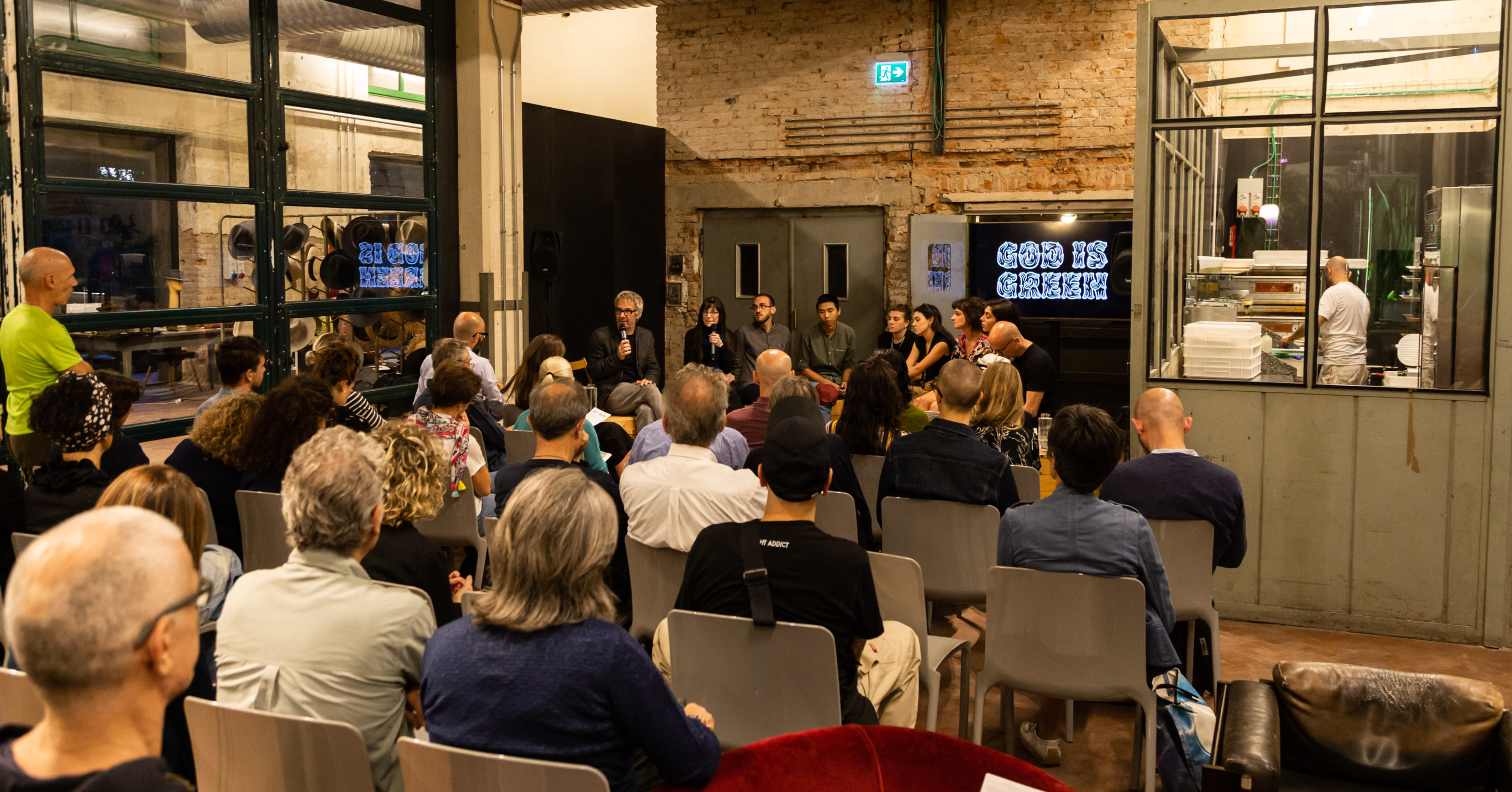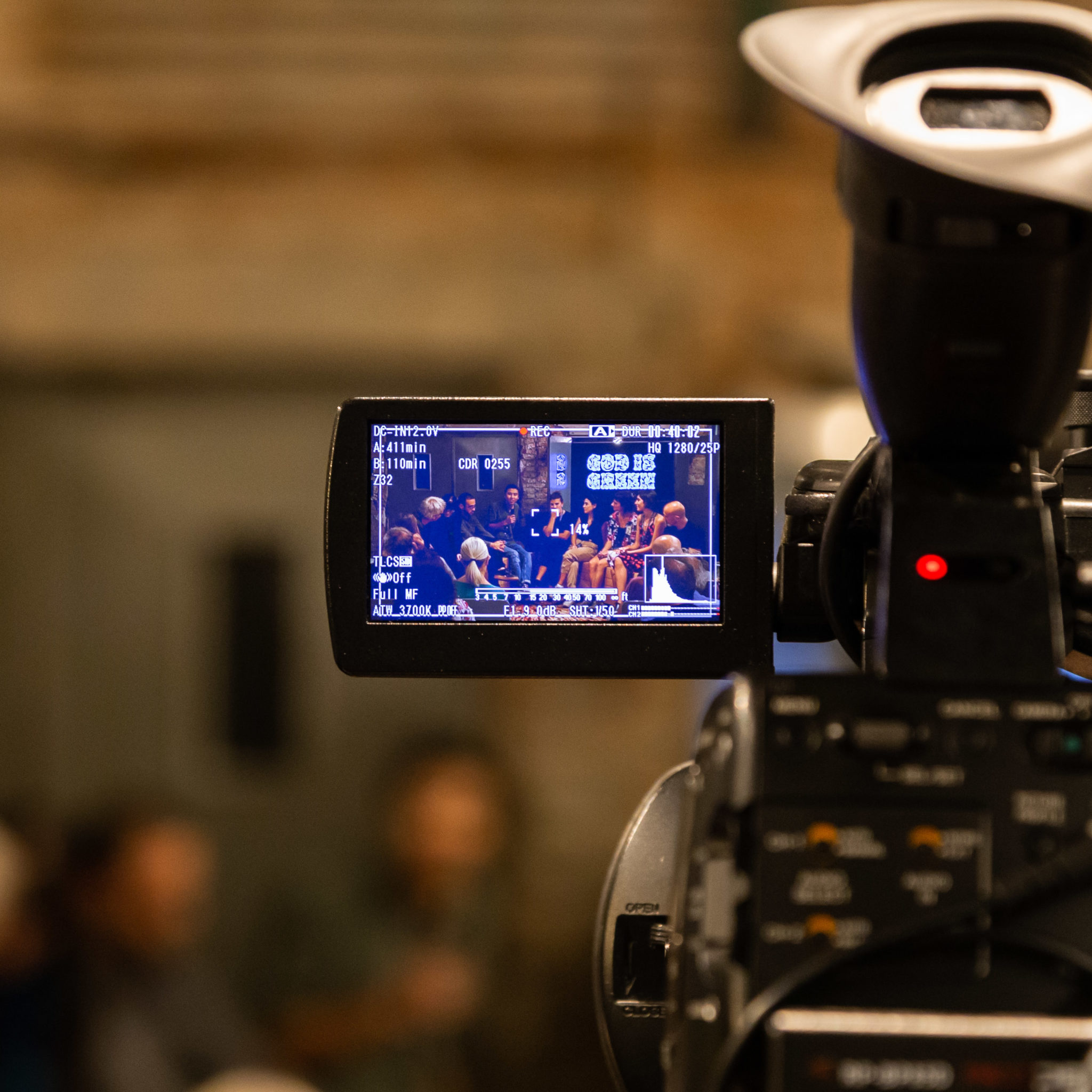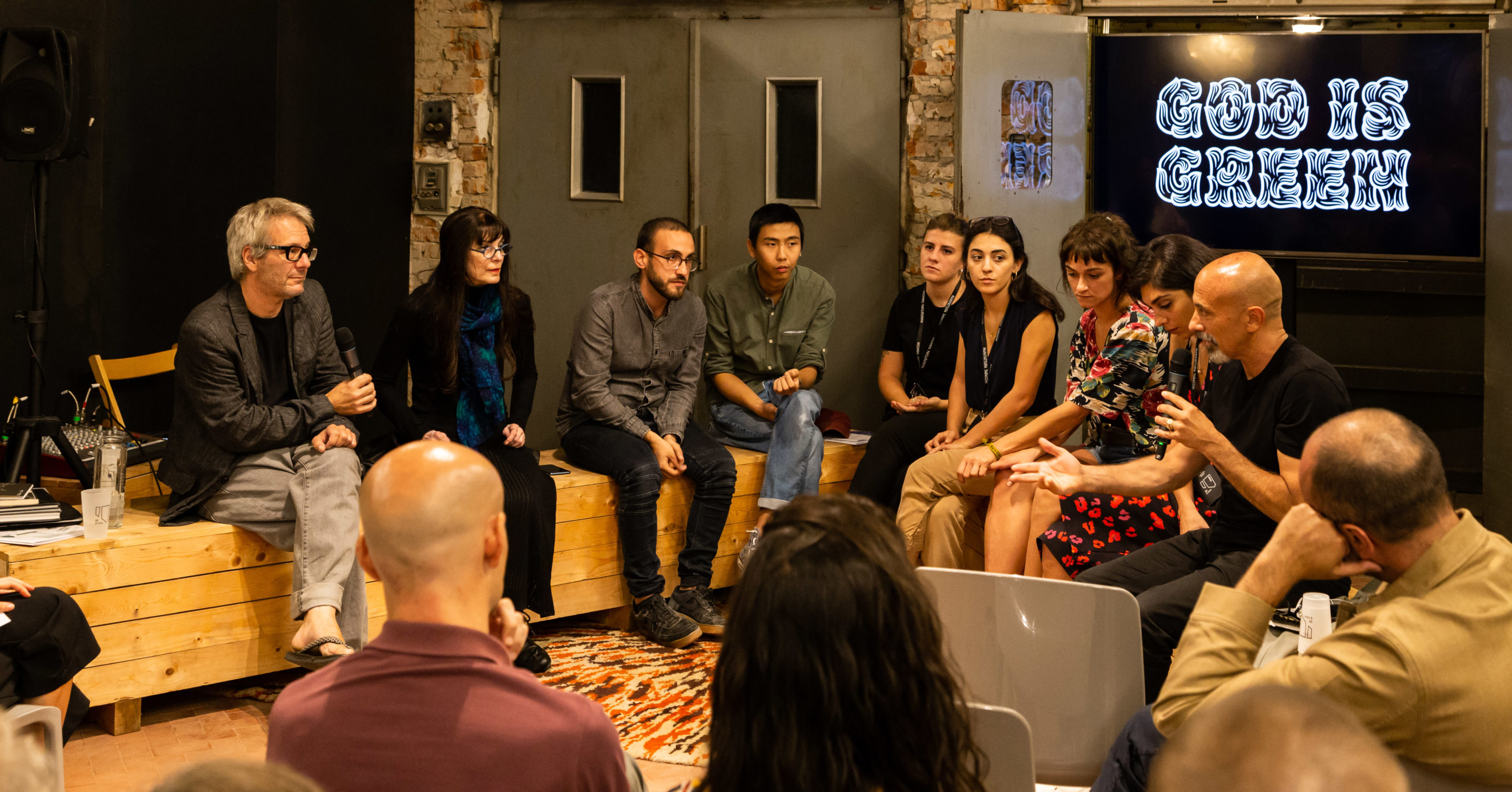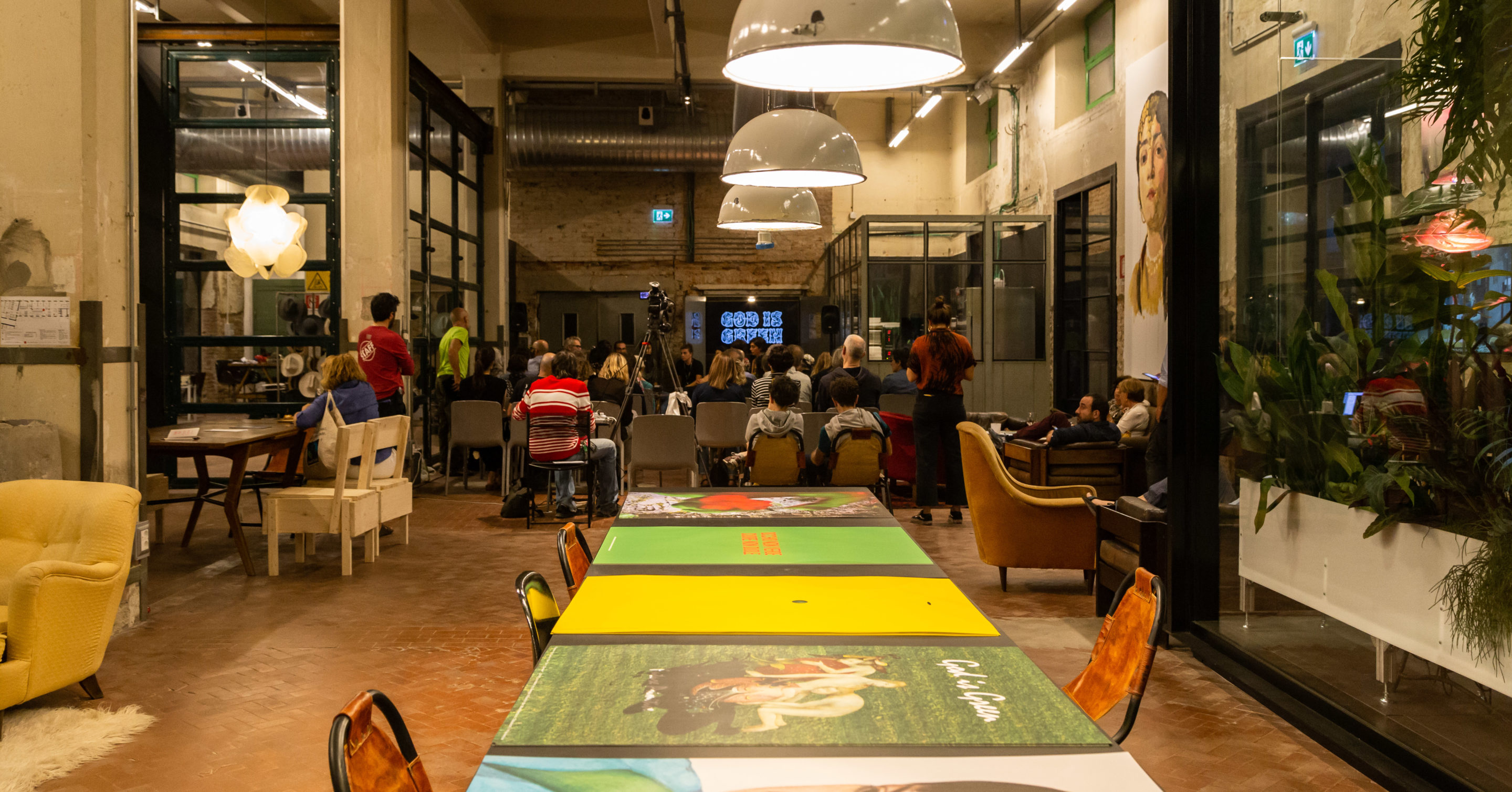A word on art: Beauty is in the eye of the beholder
Beauty is in the eye of the beholder
A talk on art and sustainability with contributions from: Andrea Cavallari – artist in exhibition, Nancy Burson – artist in exhibition, Sergio Risaliti – director Museo Novecento.
God is green
Taking place as part of the God is Green festival and the exhibition Art on Earth, the talk brought to the stage inspirations and experiences, from art, genetics and music. It was also an opportunity for the artists from the new edition of the Art Residencies programme, La Meraviglia (wonder), to present the posters they had created especially for the festival.
Beauty is in the eye of the beholder is a phrase from Shakespeare which acts as a counterpart to Saint Augustine, for whom defects were not found in the thing that is seen, but in the eyes that see it. It is fundamental to start from this change of perspective to have a new way of looking at the world and acting for things to change.
In what way can art be a part of this change?
Nancy Burson

I think that the initial starting point is attributable to the individual, meaning a profound acceptance of their own self. For 7 years I documented deformity, photographing people who had suffered mutilations or deformities from cancer. They are the masters of the art of self-acceptance. The human brain is used to forming an idea on a person on the basis of their physiognomy, which it sees for only 2 or 3 seconds. This is a technique that carnivores developed to work out in a fraction of a second whether an animal is prey or a danger.
Humans are still influenced by this mechanism, necessary in evolutionary terms but also quite complex, given that we’ve taken ourselves out of the food chain, we’re neither prey nor predators. I was enriched by this experience. When I met these people for the first time, I looked at them again: the image that I had of them completely changed. I want to share this with you: it’s very easy to change the image that we create of another person, all it takes is a second.
Play video
Where the dynamic of acceptance of the other meets resistance, what role does art have in getting past that?
Sergio Risaliti

A while ago, I curated an exhibition on the relationship between art and science. I had read a book by Franco Prattico, Eva Nera, which fundamentally claims that racism is a false common place. If we all go back to our progenitor mother, we realise that over the millennia we are only the result of combinations and cross-contamination between people of different races. We don’t descend in a direct line from our race, we are the result of this continual mixing in a rhizomatic sense. Scientists have understood through analysis of the genome, that many deja vus are probably the memory of our DNA, of passages that we can reconstruct today of the descendant’s lives. Humans have the possibility of having many cognitive and emotional experiences that remain etched in their DNA.
What is the link between beauty and human beings?
Andrea Cavallari

All the ancient treatises on the genesis of man speak of a creative sound. In principium verbum erat: that ‘verbum’ is an acoustic vibration, the sound that Mario Schneider was able to identify as a low D flat, which originates from the cosmic egg which breaks, releasing a very pure sound that over time condenses, becoming light and then matter. The most archaic genesis comes from India, which perhaps has the greatest richness of acoustic variations translated into music. The Greek populace – which Umberto Galimberti says is the most intelligent the planet has ever seen – translated these sounds into mathematical terms. Pythagoras retrieved the first four integers whose sum is ten and created the perfect sound model. The other sounds are part of the Dionysian domain, but the beauty of sound is translated into purely mathematical terms. From here we go 2500 years on to arrive at Brahms and Beethoven.
Play video
Can you create a parallel with the visual world, recounting a similar story for beauty in art?
Sergio Risaliti
Giorgio Vasari wrote that the architecture of Brunelleschi was sonorous. If we had a way of capturing the sonorous resonance of Santo Spirito, constructing a melody along mathematical lines tied to the celestial harmonies of Vitruvius, so according to Pythagoras, we’d have an incredibly beautiful compilation. There is an intimate and interconnected relationship between art and music, a harmony, it’s not by chance that this will be the title of the third edition of the Artistic Residencies at Manifattura Tabacchi.



